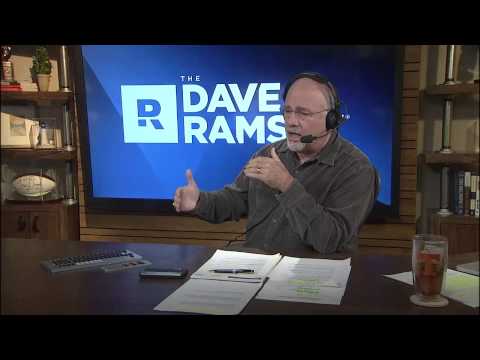How To Invest In Bonds
Table of Contents Heading
- Basic Things To Know About Bonds
- Secondary Market
- What Are Bonds?
- How We Rank U S. Online Bond Brokers
- Most Undervalued Stocks In 2021
- Costs Of Investing
It measures what the return on a bond is if it is held to maturity and all coupons are reinvested at the YTM rate. Because it is unlikely that coupons will be reinvested at the same rate, an investor’s actual return will differ slightly. Calculating YTM by hand is a lengthy procedure, so it is best to use Excel’s RATE or YIELDMAT functions . A simple function is also available on a financial calculator. Bonds rated BBB to Baa or above are called investment grade. This means they are unlikely to default and tend to remain stable investments. Bonds rated BB to Ba or below are called junk bonds—default is more likely, and they are more speculative and subject to price volatility.
Just as with individual bonds, the investor receives a trade confirmation for all fund buy and sell orders. If, for example, the fund charged ½ of 1% as an annual expense ratio, an investor would pay 50 cents on every $100 invested. Match the fund’s investment objective with the investor’s objective.
- States, cities and local governments issue municipal bonds.
- The interest yield that you receive on your bonds can vary enormously.
- If you’ve got a slightly higher appetite for risk, then you might want to check out the bonds issued by GameStop.
- Companies with lesser credit ratings high-yield bonds, or junk bonds.
Like a homeowner paying off a mortgage every month, if the company doesn’t have the income to support its payments, there will be trouble eventually. We believe everyone should be able to make financial decisions with confidence. NerdWallet, Inc. is an independent publisher and comparison service, not an investment advisor. Its articles, interactive tools and other content are provided to you for free, as self-help tools and for informational purposes only.
Basic Things To Know About Bonds
Some corporate bonds, known as convertible bonds, contain an option to convert the bond into common stock instead of receiving a cash payment. Convertible bonds contain provisions on how, when the option to convert can be exercised and at what price. A bond’s maturity refers to the date on which the investor’s principal will be repaid. Generally, bond terms range from one year to 30 years. Fixed rate bonds carry an interest rate that is established when the bonds are issued with periodic interest payments, typically semiannual.

The investor earns interest each year and is repaid their original investment on a specific maturity date. As an investor, you can buy individual bonds or a bond mutual fund or exchange-traded fund .
Secondary Market
In the tenth and final year, the bondholder will exchange their bond with the issuer for their final payment of $1,000. When all is said and done, the investor will have made $500 over ten years. This is an inverted yield curve with short-term interest rates higher than long-term rates. An inverted curve shows that the bond market is under stress because it essentially means that investors are being paid more for taking less risk. Inverted curves are not usually very dramatic looking, but they can be. For example, here is the yield curve from September 14, 1981. When thinking about how to buy bonds for your investment portfolio, individual bonds offer several challenges.

Create a retirement income strategy, build a bond ladder, or stay on top of market updates. CDs offer FDIC insurance,3 providing a guarantee of the invested principal up to certain limits. In each case, the strategy should reflect your anticipated needs as well as your expectations about how the market and interest rates will perform over time. Bankrate.com is an independent, advertising-supported publisher and comparison service.
What Are Bonds?
When you invest in bonds, you loan your principal for the promise of repayment with interest. However, fixed income products can be complex, don’t guarantee against loss and carry different risks. Highly rated bonds can also offer a lower interest rate. If a bond has a poor rating, it will have to offer a higher interest rate to attract investors.
Bond swapping is another way to achieve a tax-related goal for investors who are holding a bond that has declined in value since purchase but have taxable capital gains from other investments. The investor sells the original bond at a loss, which can be used to offset the taxable capital gain or up to $3,000 in ordinary income.
Because a convertible bond is a bond with a stock option built into it, it will usually offer a lower than prevailing interest rate. Exchange-traded funds, or ETFs, are similar to closed-end funds, but have transparent portfolios and are generally passively managed to track an index. In the United States, major rating agencies include Moody’s Investors Service, Standard & Poor’s Corporation and Fitch Ratings. Each agency assigns its ratings based on the analysis of the issuer’s financial condition and management, economic and debt characteristics, and the specific revenue sources securing the bond.
How We Rank U S. Online Bond Brokers
However, the rates on offer are still higher than what you would earn in a bank account. You can by U.S. government bonds from a period of just 3 months, all the way up to 20 years-plus. For a 5 year term, you’ll get in the region of 1.89%. Although there are literally thousands of bonds to choose from, we’ve decided to list five of the best for 2021 and beyond. Each bond will have its own risk attached to it, which should be reflected in the annual yield on offer.
Operating income differs from net income, because it factors out interest payments (which are tax-deductible) and taxes, and is the best measure of a company’s ability to pay its debts. Beyond ratings, the quickest way to determine the safety of a company-issued bond is by looking at how much interest a company pays relative to its income.
As the interest rate will fluctuate depending on demand and supply, some traders like to invest in bonds so that they can speculate on the future direction of interest rates. In the vast majority of cases, bonds will always pay a fixed rate of interest, at a fixed point in time, which is always determined before the investment is made. This means that if you hold on to your bonds until they expire, then you know exactly what you are going to make. This is perfect if you want to make a passive income. Much like in the case of any other asset class available in the investment sphere, people invest in bonds to make money. Check out the following factors that motivates investors to buy, sell, and trade bonds.
Most Undervalued Stocks In 2021
In addition to presenting new corporate bond investment opportunities, BondSavvy has created a Corporate Bond Investing 101 video, which is free if you subscribe to BondSavvy. In general, the bond market is volatile, and fixed income securities carry interest rate risk.
However, when added to any portfolio, bonds provide essential diversification into investments with very different characteristics than equities. As a result, investors should take the time to learn how bonds can supplement any portfolio to reach their short- and long-term financial goals.
Brokered CDs do not need to be held to maturity, charge no penalties for redemption, and have limited liquidity in a secondary market. If a CD has a step rate, the interest rate of the CD may be higher or lower than prevailing market rates. Step-rate CDs are subject to secondary-market risk and often will include a call provision by the issuer that would subject the investor to reinvestment risk. The initial rate of a step-rate CD cannot be used to calculate the yield to maturity.
The price of a bond is based on variables like interest rates, supply and demand, liquidity, credit quality, maturity and tax status. Newly issued bonds normally sell at or close to par (100% of the face value). Bonds traded in the secondary market, however, fluctuate in price in response to changing factors such as interest rates, credit quality, general economic conditions and supply and demand. When the price of a bond increases above its face value, it is said to be selling at a premium. When a bond sells below face value, it is said to be selling at a discount.
Please read the prospectus carefully before you invest. If rates have declined and a bond has appreciated in value, the investor may decide that it’s better to sell before maturity and take the gain rather than continue to collect the interest.
If you’re interested in learning how to buy bonds that aren’t new issues, you can buy all the above types of bonds on the secondary market. Purchases are made via a brokerage, specialty bond brokers or public exchanges. You can use bond ratings from Moody’s, Fitch and Standard & Poor’s to assess the strength of a bond.
When placing a competitive bid, you can indicate your preferred discount rate, discount margin or yield. Bond mutual funds and ETFs are alternatives to purchasing individual bonds. They represent a range of investments all poured into a single bucket.
The coupon is also called the coupon rate or nominal yield. To calculate the coupon rate, divide the annual payments by the face value of the bond.
Costs Of Investing
Income for some investors may be subject to the federal Alternative Minimum Tax . Tax-exempt bonds may fit within your overall investment strategy depending on your tax bracket and investment goals.

